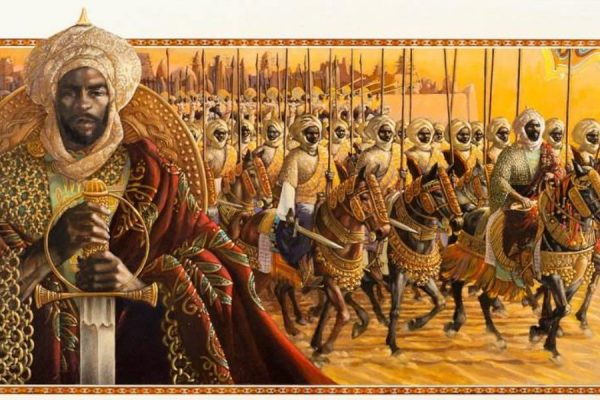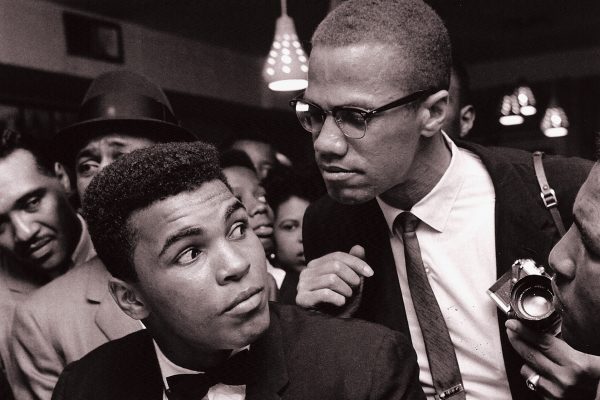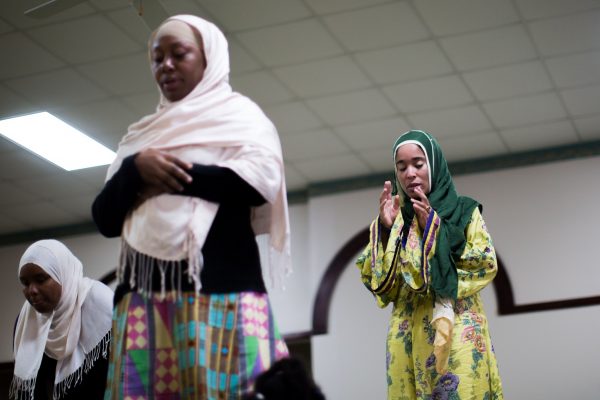Makandal not only paved a way for the most universal and transcendent practice of Islam in the Americas but also foretold that Blacks in the Western hemisphere would one day be masters in the very lands in which they were formerly enslaved. The fulfillment of this prophecy began with Haitian independence on January 1, 1803, and the deep river of the Black freedom struggle in the Americas represents its unstoppable unfolding.
Makandal not only paved a way for the most universal and transcendent practice of Islam in the Americas but also foretold that Blacks in the Western hemisphere would one day be masters in the very lands in which they were formerly enslaved. The fulfillment of this prophecy began with Haitian independence on January 1, 1803, and the deep river of the Black freedom struggle in the Americas represents its unstoppable unfolding.
Haiti’s was the first, and the only, successful uprising of enslaved human beings in the history of the Western hemisphere, and according to some historians in the history of the world. Before the American and French revolutions, the Haitians called humanity to embrace universal liberty, equality, and fraternity, with their words, deeds, and creative spirit – enabling them to fight and defeat three great European powers: Spain, France, and Britain from 1791-1804.
The Haitian Revolution of 1791 inspired the likes of Frederick Douglass, Simon Bolivar, as well as the Malê Hausa and Yoruba Muslims in Salvador da Bahia, Brazil. It was the crushing defeat of Napoleon Bonaparte by the Haitian forces of Jean-Jacques Dessalines and Toussaint Loverture in the former French colony of St. Domingue that compelled Bonaparte to sell the Louisiana Territory to the newly formed United States, doubling its size.
I discovered through research and inspiration that the heart of this movement for the healing and liberation of humanity was a man named Makandal. While Makandal’s name is seldom mentioned alongside Bookman Dutty, Cécile Fatiman, Marie-Claire Hereuse, Dessalines, and Loverture in accounts of the Haitian human liberation movement, he was in fact its father.
The Black Messiah, as he called himself, was the enigmatic maroon guerrilla leader who laid the spiritual and sociocultural foundations of the Haitian Revolution. Maroons were Blacks who had escaped slavery and built free communities in the mountains and swamplands of the Americas. They refused to be house slaves or field slaves because for them slavery was not an option for human existence. Like those companions of Prophet Muhammadﷺ who refused to live under Meccan persecution but were unable to migrate to Medina, the maroons established their own independent societies.
However, Makandal’s story neither began on a slave plantation nor in a maroon lakou or village. In Sylviane Diouf’s award-winning work, Servants of Allah: African Muslims Enslaved in the Americas, we learn that Makandal was born in West Africa during the early eighteenth century. He was most likely of Mandinka lineage, wrote and spoke Arabic fluently, had been made a prisoner while fighting in a war, and was a murabit or Muslim scholar.
Diouf mentions that in the Mandinka language makanda is a spiritual protection and thus, “Makandal acquired his name because of his mystical power and his involvement in amulet making-so much so that amulets became known, on the island, as makandal.”
I also learned from many conversations over the years with my mentor and friend Professor Zo Chérubin, a Haitian academic and socio-cultural commentator, that according to Haitian oral tradition Makandal had a vision, while in Africa, that he would one day liberate the enslaved Africans in the West, and actually allowed himself to be taken captive sacrificing his own freedom in order to secure freedom for those in the bondage of the demonic Euro-American slave trade. He is also believed to have been a gifted visual artist, musician, herbalist, fearless warrior, and polyglot who angered the French with his mastery of their language.
Makandal was sold into slavery and put to work on the plantation of Le Normand de Mezy and expected to die, like most Africans, from the inhumane living conditions in about seven years. But after a few years, he managed to escape to the mountains and live as a free man again.
However, this was not enough for Makandal. He desired the unification and freedom of all of the various African nations and native inhabitants of Ayiti and Quisqueya, meaning “Land of Elevation” and “Mother of all Lands” respectively, as the Taino, Cigüayos, and Arawak referred to their island paradise before its discovery and invasion by Europeans. He became the first to unite the different nations and religious groups on the island into one cohesive force.
I recall once Professor Chérubin explained to me that Makandal was able to achieve this seemingly impossible task because the way he embodied Islam enabled him to recognize the truth in the diverse spiritual traditions of the Africans and natives. This, in turn, allowed members of these communities to see the highest truths of their respective religions in Makandal.
Professor Chérubin’s sheds much needed light on this aspect of Makandal’s contribution to Islam in the West in his groundbreaking work Makandal, donc Je Suis, L’Imam du Nouveau Monde (available in French on Lulu.com at https://goo.gl/MDcSNB), soon to be published in English as Makandal, I Am, Imam of the New World. The title of his profound book inspired the title of this essay, and his invaluable primary research is the wellspring from which these ideas flow.
It is for these reasons and many more that the African-American must always keep his gaze upon Haiti. The African-American who forgets Haiti forgets himself. Thus Makandal was much more than a simple maroon leader. He was the New World’s first Imam, a visionary God-conscious leader following the Way of the Biblical and Quranic prophets and great sages.
Makandal not only paved a way for the most universal and transcendent practice of Islam in the Americas but also foretold that Blacks in the Western hemisphere would one day be masters in the very lands in which they were formerly enslaved. The fulfillment of this prophecy began with Haitian independence on January 1, 1803, and the deep river of the Black freedom struggle in the Americas represents its unstoppable unfolding.
After twelve years of leading his devoted followers in small anti-slavery raids and poisoning the plantation wells, the Black Messiah was sentenced to death by burning at a stake on January 20th, 1758. Imam Makandal had promised his followers that the French would never kill him, after being engulfed in flames and being heard laughing while saying “La ilaha illa’Allah” (There is nothing worthy of worship except God) he is reported to have miraculously leapt out from the blazing fire unharmed, like the Noble Abraham ﷺ in the Quranic narrative.
Accounts differ as to what happened next, but they all agree that his body was not found after the fire extinguished. The French claim they recaptured him, some say he escaped into the mountains, and others believe he became one of the mosquitos that decimated the European population on the island with yellow fever thereafter.
On this 52nd anniversary of the martyrdom of Malcolm X, let us be clear that the Black Messiah that J. Edgar Hoover’s FBI hunted among African-American boys and men, like Pharaoh and Haman hunted the Noble Moses ﷺ among Israelite boys, can never be slaughtered or prevented because it is more than a man. It is a “meaning” (ma’nā in Arabic), a consciousness, a spiritual archetype – and archetypes are cointel-proof.
The Black Messiah is the consciousness of Christ at the service of Black healing and inner liberation from the idolatry of White supremacy in the world. This consciousness is pure light and is therefore not restricted to a particular time, place, gender, or ethnicity. The true weapons of The Black Messiah are not military, not machetes and poison, neither guns nor bombs, rather they are, as the great non-violent warrior Shaykh Ahmadu Bamba said, “divine knowledge and consciousness.”
The light of this consciousness shines through any heart that has completely been emptied of attachment to the materialistic systems and lifestyles of Euro-American supremacy and has thus been filled with the love of God, humanity, the natural world, and Spirit.
From Makandal to Malcolm X, from Nat Turner to Noble Drew Ali, the light of the Black Messiah will continue to shine so that the above-mentioned Quranic promise to the weak and oppressed in the land be fulfilled in our lifetimes and in every generation until the Final Hour.
This article was originally published on Sapelo Square, found here.





